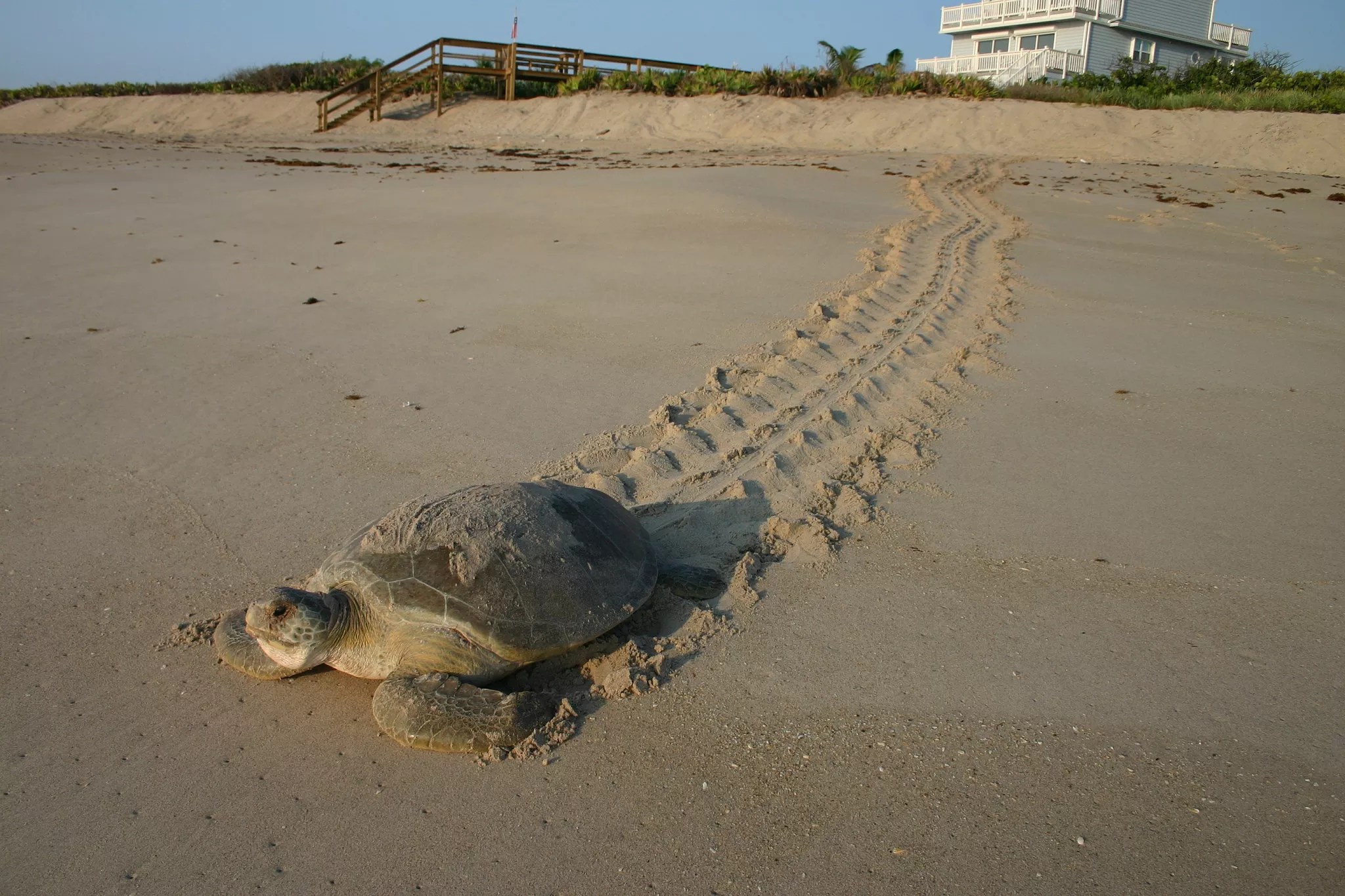
Photo by Florida Fish and Wildlife Conservation Commission

Audio By Carbonatix
This week, crews began work on an ambitious new beach renourishment project in Miami Beach, where Hurricane Irma washed away much of the shoreline. The $1.5 million emergency project, which involves trucking in 32,000 tons of sand from Central Florida, won’t be done until at least November.
But environmentalists point out that the massive undertaking coincides with sea turtle nesting season, which runs from May 1 to October 31. Jennifer Rotker, a local sea turtle advocate, says the timing couldn’t be worse.
“I don’t see how they could start this in the peak,” she says. “We’re over two months into nesting season.”
In most cases, Miami Beach tries to avoid intensive beach projects during sea turtle season, according to the city’s assistant director of environment and sustainability, Margarita Wells. But after Irma swept away much of the shoreline between 66th and 68th Streets, state and local agencies decided it was urgent to truck in new sand immediately.
“In this case, the erosion is so severe that it has prompted the emergency re-nourishment not only because it affects the beach’s storm protection abilities or its recreational use, but also because the narrow beach does not give the sea turtles enough space to safely lay nests,” Wells wrote in an email.
It’s a dilemma that puts conservationists in a tough spot — if the beach is too damaged, sea turtles have a hard time laying their eggs. But any work on the beach during nesting season also could inhibit new nests from being laid.
“It does need a renourishment. My main point here is why are they not doing it at another time?” Rotker says.
Hoping to minimize the impact to threatened and endangered species, Wells says the county’s sea turtle conservation staff monitored the beach for 65 days before the project started but didn’t find any new nests. The team will continue to monitor the area and will relocate any nests they find to a safer part of the beach.
Carli Segelson, a spokeswoman for the Florida Fish and Wildlife Conservation Commission, says the agency authorized the project along with the U.S. Fish and Wildlife Service. To reduce potential harm, crews will stop working before nightfall and remove their equipment from the job site at the end of each day.
“While these operations